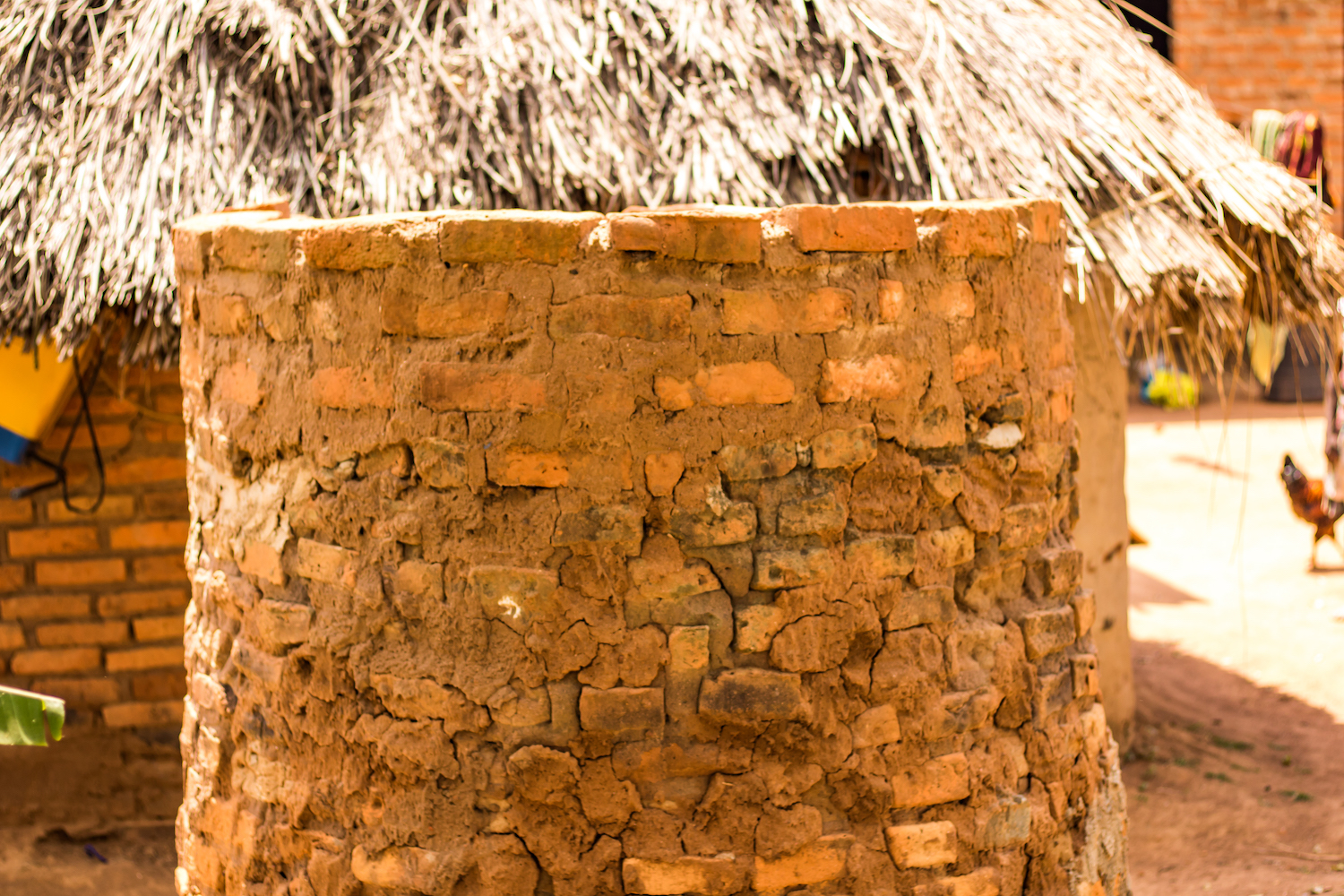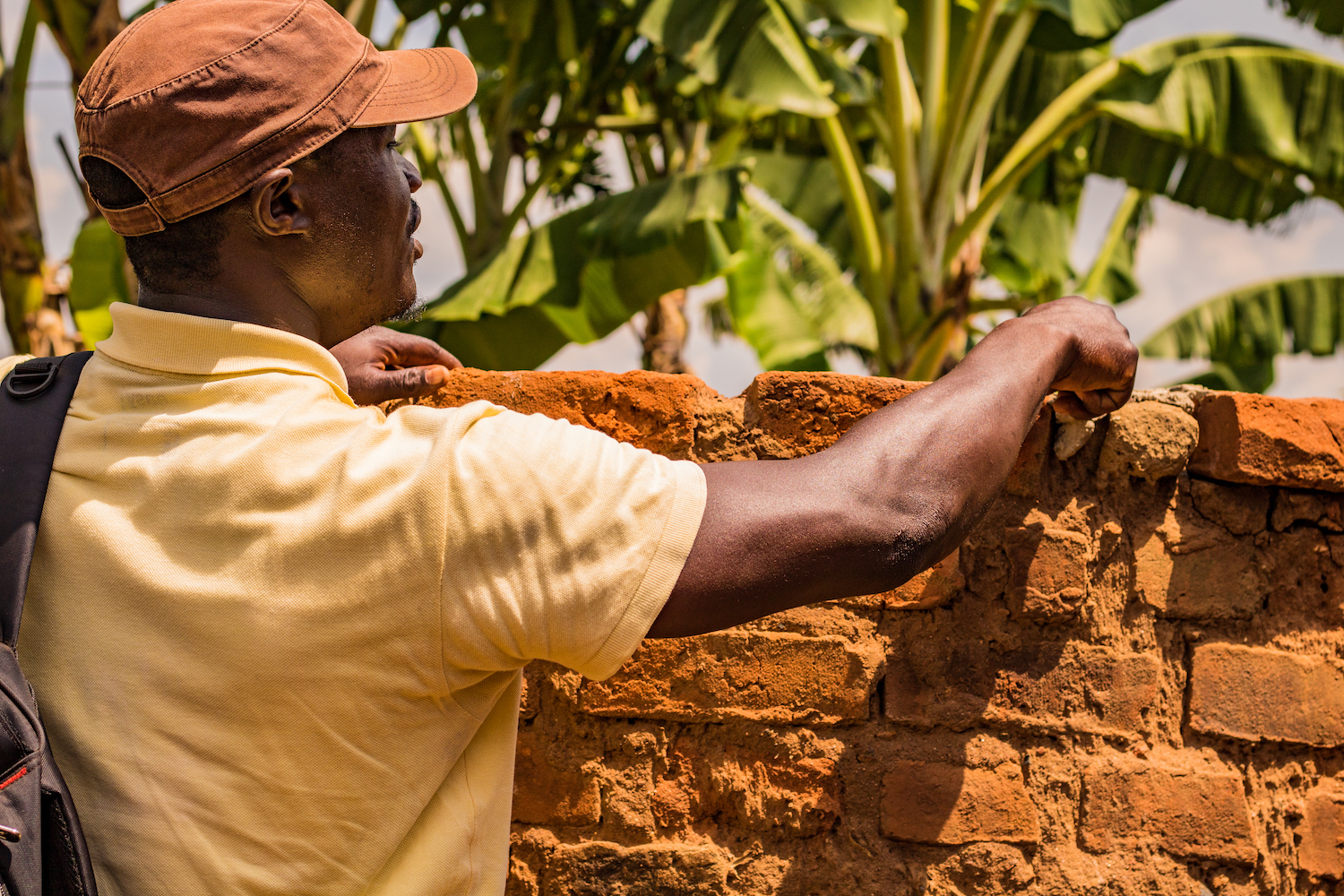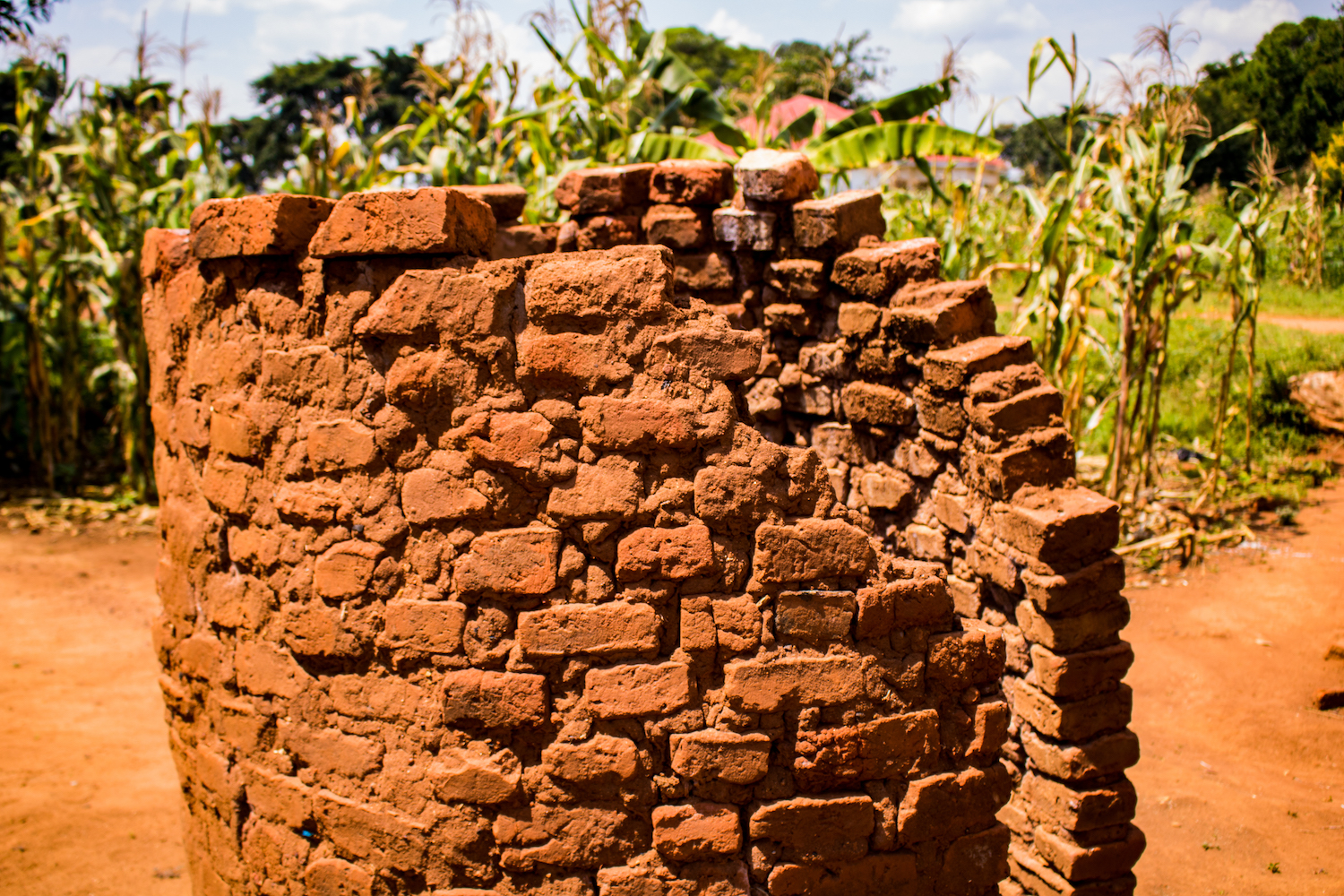How $1 makes a shower last ten years instead of one
About three times a week, Kibo staff members Tom, Martin and Enock visit Busoga villages to educate people about the importance of sanitation and to teach communities how to build long-lasting, life-changing hygiene facilities — including showers.
Showers not only benefit an individual's hygiene, but they are also important to human dignity. Without a private shower, it is far more likely for others to see an individual naked. Staff members have heard of cases of adultery and rape after seeing others showering. It also causes communal discord, because people can look down on or objectify people they have seen showering. These social pressures also make it less likely for people to shower often and keep themselves clean.
The Water, Sanitation and Hygiene (WASH) team teaches community members why showers are important and how to build them. Usually made of brick and plastered with mud or dung, showers are time-consuming and sometimes-expensive for people in the village to build. The WASH team was troubled when they noticed that it only took one rainy season for the plaster holding the shower together to fall apart.




In collaboration with their partner communities, the staff came up with a solution that was accessible and affordable to people in the village. In the last month, the WASH team has started encouraging people to put a ring of cement on the top layers of shower facilities. The whole shower does not need to be reinforced with cement, but just the top few layers of brick to prevent erosion.
Generally, a shower needs three or four kilos of cement to reinforce the top few layers of brick and make the shower sturdy. At only 1,000 shillings per kilo, or 25 cents, a family can spend as little as $1 to make sure that their shower serves their family well for 10 years instead of just one.
Martin demonstrates how a shower reinforced with a layer of cement at the top does not succumb to erosion. This shower will serve its users for many years to come with minimal to no repairs.
Even though some of the plaster might wear away below the cement, it is quick and inexpensive to re-plaster the sides, compared to the time-consuming process of rebuilding an eroded shower.
The Kibo staff's long-term presence in Busoga villages enables them to work with communities as unforeseen problems arise. Kibo knows that no one knows a community's problems — and how to fix them — better than the community itself. Like a simple ring of cement on a shower, solutions communities innovate for themselves often make the most sense for their circumstances. Local solutions endure.


